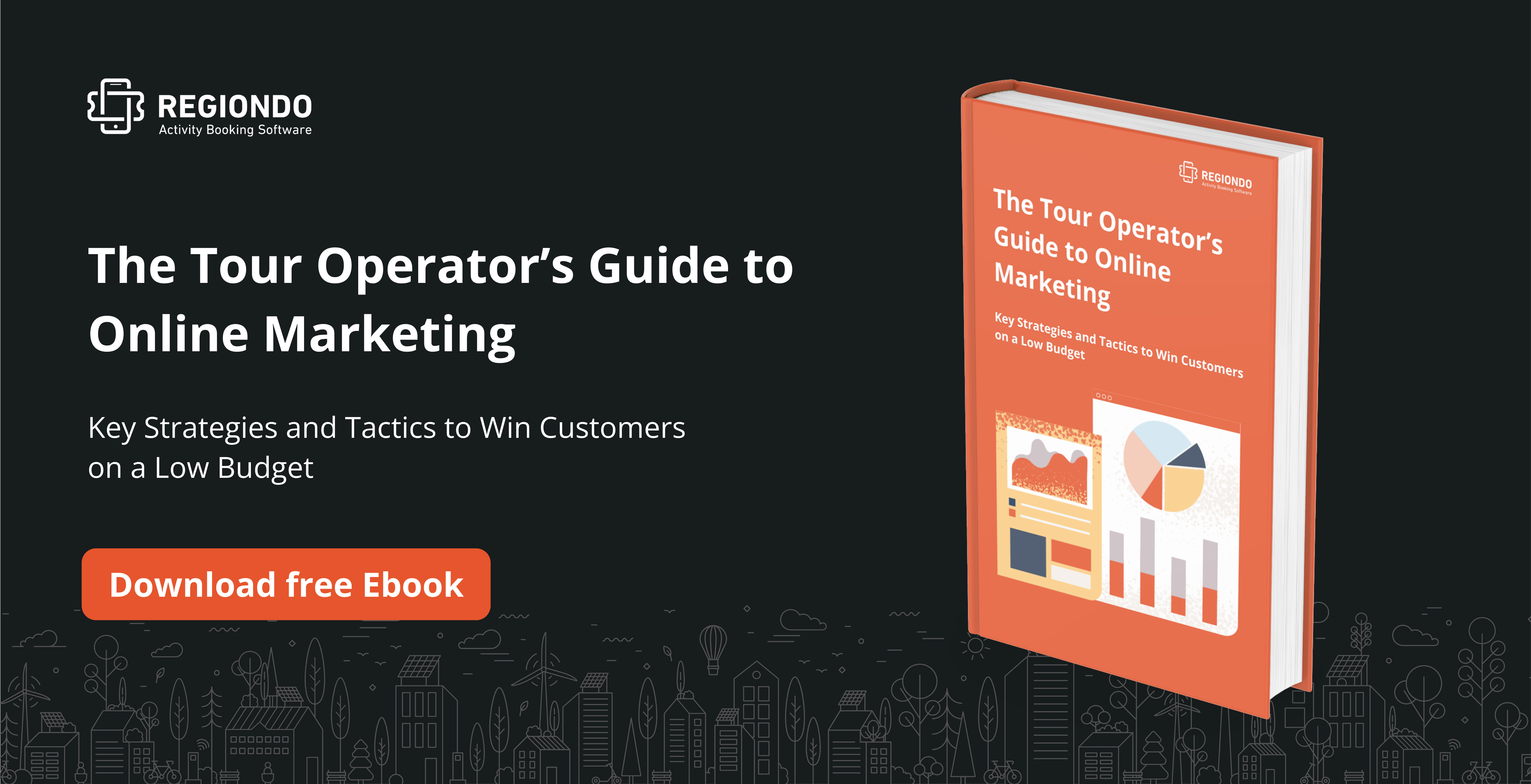You perhaps offer the best or most unique tours (even your past customers agree!), but sadly, not many people know you exist or know that you offer some of the best tours in your region. In such a scenario, you may be facing a visibility problem leading to lack of sales.
OR perhaps you’re very visible: many people know that you exist but aren’t buying from you. In this scenario, you may have branding or technical issues costing you revenue.
Whichever scenario sounds familiar to you, this article will give you as a tour operator, 8 tips to increase your sales, especially during low seasons.
1. Think About What You’re Really Selling
Are you selling benefits? Because that’s what people actually buy. They buy things for the benefits they confer, and this is particularly true for the travel industry where people buy experiences.
Perhaps it’s better to think about it this way: people buy emotionally and justify it rationally. What that means is that you need to sell feelings, not things.
So how can you sell the benefits of your tours and activities effectively?
Start by going back to the drawing board, where you defined your ideal customer. With that knowledge, lay out the benefits of your products and services to your ideal customer.
It’ll help to make a comprehensive list of the benefits of your products and services. What did past customers love about your tours and activities? What attracted them to your product or service in the first place? How did they leave feeling?
Once you identify benefits that will reel in your ideal customer, you need to market and sell to them, emotionally.
2. Optimize for Online Sales
Making sales via phone or email is great — old school but great. What’s not so great is that a lot of your potential clients are booking their tours and activities online.
Zion Market Research reports that the online travel market was worth 765 billion USD in 2017, with a projected value of 1,955 billion USD by 2026.
You know what that means: It’s time to jump on board and accept online bookings on your website. Furthermore, it’s not only enough to accept online bookings. You need to make sure your checkout process is as smooth and frictionless as possible.
According to SaleCycle, the average cart abandonment rate this year is 79.17 percent. That means that over ¾ of online shoppers leave a site without completing a purchase.
That’s a surprising and troubling statistic. The good news is that it shows us how important it is to have a smooth checkout process. Having a frictionless checkout process can greatly impact your conversion rates.
More good news: You don’t need technical know-how to implement a frictionless checkout process on your website and online platforms. You simply need an activity booking software, like Regiondo, that makes it easier for potential customers to actually buy what you’re selling, as smoothly and as fast as possible.
Travel is experiential and so is social media. A lot of travelers today flock to social media not just to get inspiration for future travel, but to get peer approved reviews.
In fact, 89 percent of millennials plan their travel around online peer reviews. According to TripAdvisor (arguably the biggest online peer review social channel), 53 percent of travelers must-read reviews before making a purchase. Additionally, 80 percent of people read between 6-12 reviews before making a purchase.
Yup!
People are using social media to get inspired AND to get peer approval on what best to do and experience in a particular destination, and who with. You could be the ‘who’ if you leverage the power of social media to give potential customers a small taste of the amazing experiences you have in store for them.
Furthermore, the power of social goes beyond discovery and marketing. A study by Deloitte reports that a majority of travelers share details of their trips on social media as soon as they get back.
We bet your ideal customers are on at least one social channel, if not all. You should ideally be on multiple social channels — everywhere your customers are. If that’s not possible, pick a social media site (preferably the one that houses a majority of your ideal customer base) that you can commit to.
4. Go to Your Customers
As much as it’s important to go where your customers are, online and on social media, it’s also important (and effective) to go where they are, physically (if possible).
For example, if you’re a tour company offering city tours, you can go to hotels or hostels and tell them about what you offer, and perhaps even partner with them.
If you don’t know where your customers are physically, refer back to your ideal customer profile and analyze their offline behavior. In doing so, you can find clusters of them based on where they live, work, or shop.
You can choose to meet them and market to them in those spaces, or use that information to better connect with them online.
5. Encourage Customers to Review You
Reviews are huge. How many times have you looked at reviews for a particular restaurant before eating there?
Remember what we said earlier about how travelers now flock to social media to get peer approval on specific destinations and activities? That’s the power of reviews right there: it greatly influences purchasing decisions.
Indeed, real customer reviews equate to more business.
So how can you get more customer reviews? Ask happy customers to leave you a review, either on your site or on TripAdvisor.
Reviews from your satisfied customers are way better (and more influential) than any sales copy you could write. In fact, those reviews need to be on whatever sales copy you write, from landing pages, product pages, and even your homepage.
The point is to make reviews front and center since you now know their sales impact.
On a similar note, be sure to include some trust signals (like professional accreditations and list of satisfied clients, etc.) on your website and all marketing copy. It helps to build credibility and trust with prospects, leading to potentially more sales.
6. Ask for Referrals
Just like reviews, referrals can be huge.
Saasquatch found that referrals generate 65 percent of new business and 92 percent of survey respondents trust friend and family referrals.
Indeed, referrals are a central part of running any business. They can help build relationships with existing customers as well as bring in new customers.
So how can you get referrals?
The easiest way is to ask. You, however, need to ask correctly, without sounding like you’re asking for favors. You also don’t want to come across as too salesy or pushy. Perhaps, gently encourage satisfied customers to refer friends and family who are visiting your region in the future. (Here are some tips on getting more reviews and referrals.)
You could even give them an incentive if that makes business sense for you.
7. Get Personal
Returning customers could surprisingly be your bread and butter.
You have a much higher chance of selling to an existing customer than you would a new one. So why not work on building strong connections with existing customers? (Plus, they’re the ones that will leave you reviews and give referrals.)
Nurture them from the moment of booking. For example, you could get in touch with them after they book to make sure the booking process was smooth for them (two benefits of this: good customer experience and feedback for you).
Make sure they have a good time during the tour or activity and ask them (after the tour) if they had a good time. Based on their response, this would be a good time to ask them for reviews and referrals.
8. Partner, Strategically
It’s important, especially for tour and activity providers, to get into mutually beneficial partnerships with other companies within the industry.
For example, if you’re an inbound tour operator, you could partner with a local hotel to get discounted rooms for your travel and tour packages.
If you’re an outbound tour operator, you could partner with other tour and activity providers in the destinations that you’re selling travel packages in.
Whatever you do, do not underestimate the power of good partnerships.
Conclusion
Whatever the reason(s) for stagnant sales — whether it’s lack of visibility, branding or other issues — the tips in this article (if properly implemented) should help you to sell more.
The reason we provided this particular set of tour selling tips is that they are simple yet effective tips to generate more sales. Any tour operator and activity provider can implement any of the above tips as early as today.
So what’s stopping you? Implement them correctly and boost your sales!
You might also like:





